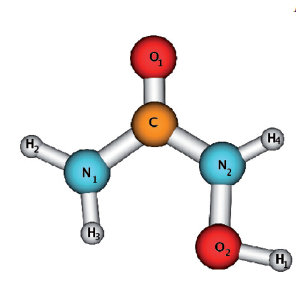Efficient geometry optimization by Hellmann–Feynman forces with the anti-Hermitian contracted Schrödinger equation
Jonathan J. Foley IV and David A. Mazziotti
Mol. Phys.
2010

An efficient method for geometry optimization based on solving the anti-Hermitian contracted Schrödinger equation (ACSE) is presented. We formulate a reduced version of the Hellmann–Feynman theorem (HFT) in terms of the two-electron reduced Hamiltonian operator and the two-electron reduced density matrix (2-RDM). The HFT offers a considerable reduction in computational cost over methods which rely on numerical derivatives. While previous geometry optimizations with numerical gradients required 2M evaluations of the ACSE where M is the number of nuclear degrees of freedom, the HFT requires only a single ACSE calculation of the 2-RDM per gradient. Synthesizing geometry optimization techniques with recent extensions of the ACSE theory to arbitrary electronic and spin states provides an important suite of tools for accurately determining equilibrium and transition-state structures of ground- and excited-state molecules in closed- and open-shell configurations. The ability of the ACSE to balance single- and multi-reference correlation is particularly advantageous in the determination of excited-state geometries where the electronic configurations differ greatly from the ground-state reference. Applications are made to closed-shell molecules N2, CO, H2O, the open-shell molecules B2 and CH, and the excited state molecules N2, B2, and BH. We also study the HCN ↔ HNC isomerization and the geometry optimization of hydroxyurea, a molecule which has a significant role in the treatment of sickle-cell anaemia.